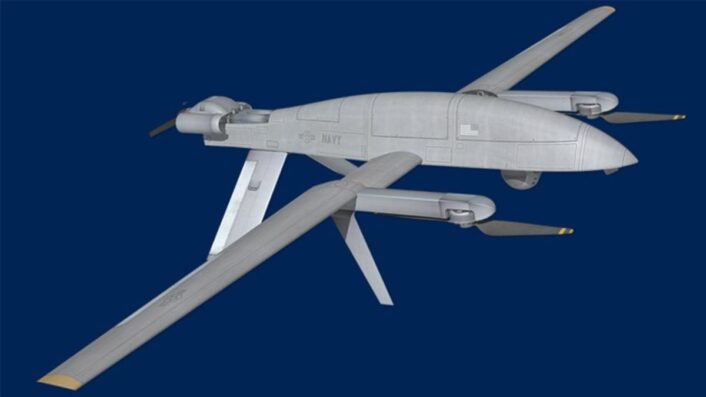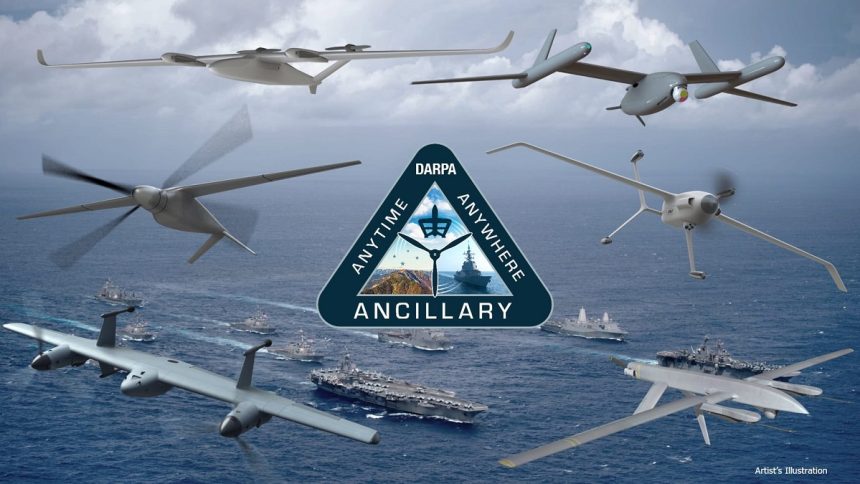The AdvaNced airCraft Infrastructure-Less Launch And RecoverY program aims to develop a long endurance, vertical takeoff and landing unmanned air system.
The Defense Advanced Research Projects Agency (DARPA) has selected the designs which will continue working on the development and initial design of the AdvaNced airCraft Infrastructure-Less Launch And RecoverY (ANCILLARY) program. The program aims to develop and flight demonstrate the critical technologies required for a leap-ahead in long endurance, vertical takeoff and landing (VTOL) unmanned air system (UAS) performance while operating from a moving ship at sea.
The UAS is intended to be able to launch and recover from ship flight decks and small austere land locations in adverse weather without additional infrastructure equipment, thus enabling expeditionary deployments. Unlike large VTOL systems, the small UAS size would allow many aircraft to be stored and operated from one ship creating a tactical beyond-line-of-site (BLOS) multi-intelligence sensor network capability.
“The goal of ANCILLARY is to increase small vertical take-off and landing (VTOL) uncrewed aerial system (UAS) capabilities by a factor of three over the current state-of-the-art flying today,” said Steve Komadina, DARPA program manager for ANCILLARY. “Our performers are searching for innovative ways to increase payload weight and range/endurance of small, ship-launched UAS by means of novel configurations, propulsion, and controls while also removing the need for special infrastructure.”
A rendering released by DARPA together with the press release shows design concepts from the six companies selected: Sikorsky, Karem Aircraft, Griffon Aerospace, Method Aeronautics, AeroVironment, Northrop Grumman. The proposed low-weight, large-payload, long-endurance VTOL uncrewed X-planes feature innovative configurations, such as the twin proprotor ‘rotor blown wing’ from Sikorsky.
The ANCILLARY program
DARPA selected last year nine companies to produce initial operational system and demonstration system conceptual designs for this novel VTOL UAS. In addition to the six that were recently selected, the program initially involved also AVX Aircraft, Leidos and Piasecki Aircraft, developing conceptual designs during the six-month Phase Ia.
In Phase Ib, the remaining companies will mature X-plane designs, with concentration on reducing system risks through refined higher fidelity design and analysis and by conducting component and configuration hover testing. At the end of this 10-month phase, the teams will submit competitive proposals for Phase II detailed design, fabrication, and flight testing.
These technologies will support a future operational UAS that can be deployed and retrieved from Navy ships without the large mechanical launchers and landing/recovery equipment used today, taking off like a helicopter and flying missions like a very efficient winged aircraft while carrying significant payload when needed. The novel UAS will have multiple roles, ranging from Intelligence, Surveillance and Reconnaissance (ISR) to logistics and even strike missions.
“A network of these small UAS can be launched from a ship to provide beyond-line-of-sight F2T2 (find, fix, track, target) of surface vessels of interest for the ship commander,” Komadina said. “While we anticipate this effort is most likely to support Navy and Marine missions, we have found other services are very interested in the capabilities this technology can bring to diverse missions, including logistics, strike, and special uses by the Army, Air Force, Special Operations Command, and Coast Guard.”
Other technologies currently being developed within the Department of Defense, such as advances in sensors, electronic warfare, autonomy and artificial intelligence might also find their way in the final ANCILLARY design. The project is expected to culminate with X-plane flight tests starting in early 2026.
Sikorsky’s proposal
After the announcement of the selection, Sikorsky said it is already conducting flight tests to mature the control laws and aerodynamics of a novel VTOL UAS. The flight tests are intended to prove the efficiency and scalability of a twin proprotor ‘rotor blown wing’ configuration that sits on its tail to take-off and land like a helicopter, and transitions easily to horizontal forward flight for long-endurance missions, such as intelligence, surveillance, reconnaissance and targeting.
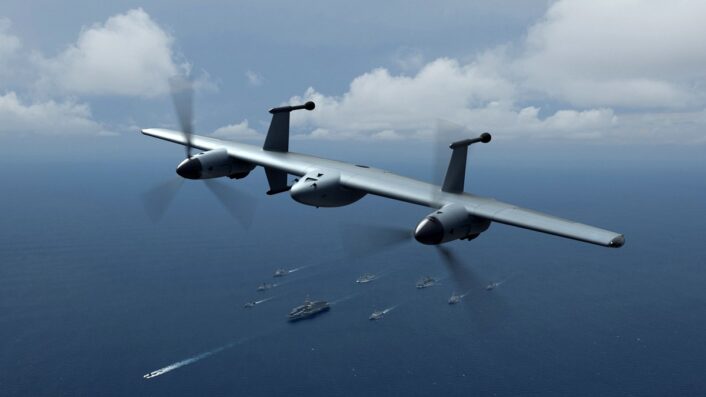
“Flight tests are underway to verify our tail-sitting rotor blown wing UAS can launch and land vertically with high stability, and cruise efficiently on wing,” said Igor Cherepinsky, director of rapid prototyping group Sikorsky Innovations. “Key enablers to flight maneuverability, and future vehicle scalability, are our MATRIX autonomy flight control system, and an articulated rotor system similar to those in traditional helicopters.”
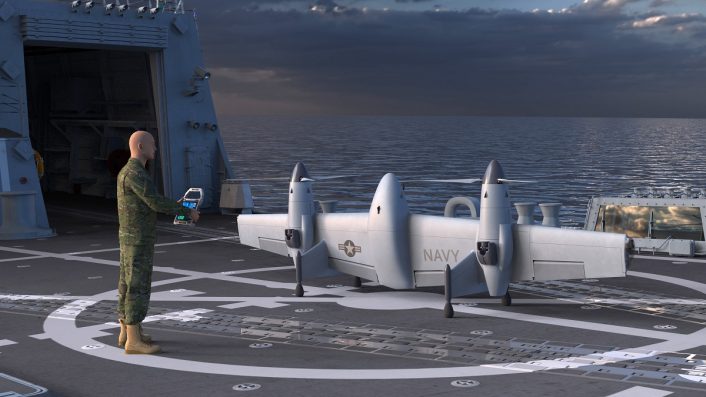
The term ‘rotor blown wing’ refers to the constant airflow from the proprotor wash across the wing. Sikorsky mentions it chose the design to reduce drag on the wing in hover mode and when transitioning to forward flight, and to increase cruise efficiencies and endurance.
Sikorsky added that the UAS currently flying is a proof-of-concept vehicle powered by a battery. If selected to produce an air vehicle for a future ANCILLARY phase, Sikorsky plans to build a 300-pound hybrid-electric version to include a 60-pound ISR payload.
Northrop Grumman’s proposal
After the selection’s announcement, Northrop Grumman said the company is leveraging its expertise in autonomous vertical lift aircraft to design the ANCILLARY VTOL UAS. The company’s statement describes the design as a cost-efficient, multiple-mission capable vehicle built on an agile platform which weighs no more than 330 pounds.
“Northrop Grumman is working to significantly enhance how future autonomous vertical lift aircraft will operate at sea and ashore,” said Tim Frei, Vice President, Research and Advanced Design at Northrop Grumman. The ANCILLARY program enables us to combine our digital engineering expertise with extensive knowledge and insights from past successes in developing and operating uncrewed vertical lift aircraft for the U.S. Navy.”
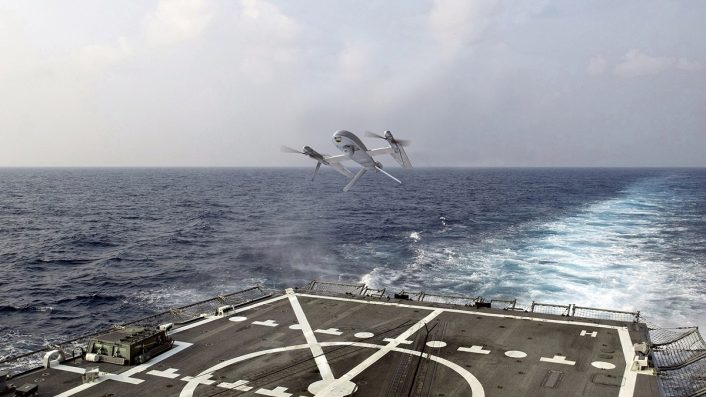
Northrop Grumman design has been developed to also perform intelligence, surveillance, reconnaissance and targeting (ISR/T) missions, employing artificial intelligence and machine learning enabled automated targeting capability. The company further adds that it can support expeditionary and special operations missions, as well as ship-to-ship and ship-to-shore logistical missions.
In a separate interview, Christopher Harris, program manager for Northrop Grumman’s ANCILLARY design, said the UAS will be able to carry payloads of 60 pounds to a range of 100 nautical miles for up to 20 hours. The aircraft a pair of rotors for VTOL operations and a pusher propeller for cruise flight.
